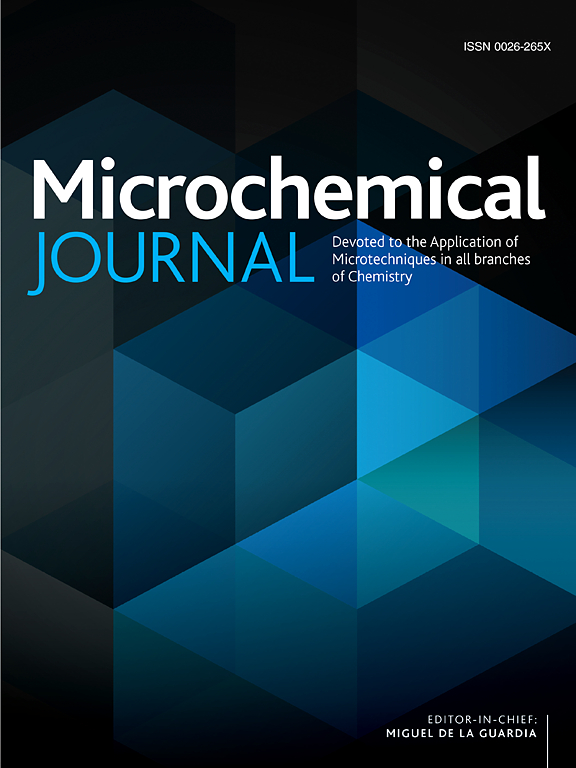Advanced 2D material sensors for diabetes management: A comparative analysis in blood serum and urine of diabetic and non-diabetic individuals
IF 4.9
2区 化学
Q1 CHEMISTRY, ANALYTICAL
引用次数: 0
Abstract
Glucose sensing is essential in managing diabetes mellitus, as it permits real-time monitoring of blood sugar level, which is imperative for effective disease control and the prevention of complications. Herein,the MoS2 and NiS@MoS2 2D materials were evaluated for the glucose detection in real biological samples such as blood serum and urine samples of diabetic and non-diabetic individuals. The NiS@MoS2 fabricated electrode has demonstrated outstanding electrocatalytic performance for oxidation of glucose molecules in 1.0 molL-1 in alkaline medium, owing to the existence of well-exposed electroactive sites, quick transit of catalysis-relevant species, and a high synergistic catalytic impact between NiS and MoS2 materials. The NiS@MoS2-GCE modified electrode was electrochemically characterized using cyclic voltametriy (CV) and electrochemical impedance spectroscopy (EIS) studies, which revealed the ecellent conductivity of NiS@MoS2 material than MoS2 material. The fabricated glucose sensor performed well in amperometric and differential pulse voltametric (DPV) studies, with low detection limits (6.4 nM and 5.8 nM) and a wider linear range (from 0.01 µM to 0.20 µM[Glucose]). The suggested sensor demonstrated long-term stability, reproducibility, selectivity, and a promising potential application for detecting a glucose concentration in real biological samples such as blood serum and urine of diabetic and non-diabetic individuals.

用于糖尿病管理的先进二维材料传感器:糖尿病患者和非糖尿病患者血清和尿液中的对比分析
本文章由计算机程序翻译,如有差异,请以英文原文为准。
求助全文
约1分钟内获得全文
求助全文
来源期刊

Microchemical Journal
化学-分析化学
CiteScore
8.70
自引率
8.30%
发文量
1131
审稿时长
1.9 months
期刊介绍:
The Microchemical Journal is a peer reviewed journal devoted to all aspects and phases of analytical chemistry and chemical analysis. The Microchemical Journal publishes articles which are at the forefront of modern analytical chemistry and cover innovations in the techniques to the finest possible limits. This includes fundamental aspects, instrumentation, new developments, innovative and novel methods and applications including environmental and clinical field.
Traditional classical analytical methods such as spectrophotometry and titrimetry as well as established instrumentation methods such as flame and graphite furnace atomic absorption spectrometry, gas chromatography, and modified glassy or carbon electrode electrochemical methods will be considered, provided they show significant improvements and novelty compared to the established methods.
 求助内容:
求助内容: 应助结果提醒方式:
应助结果提醒方式:


